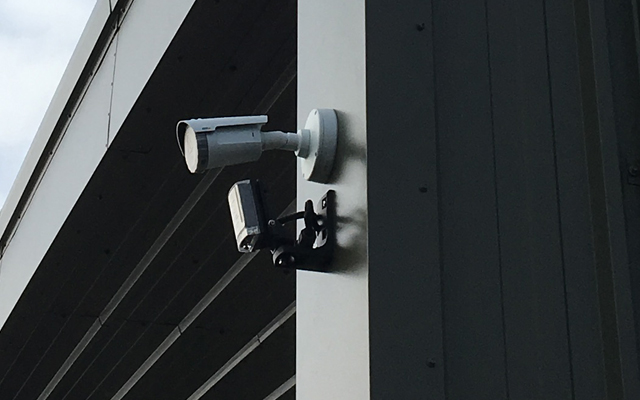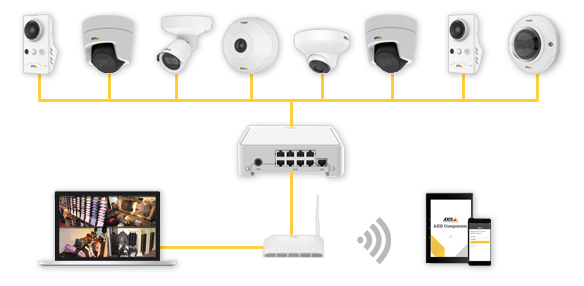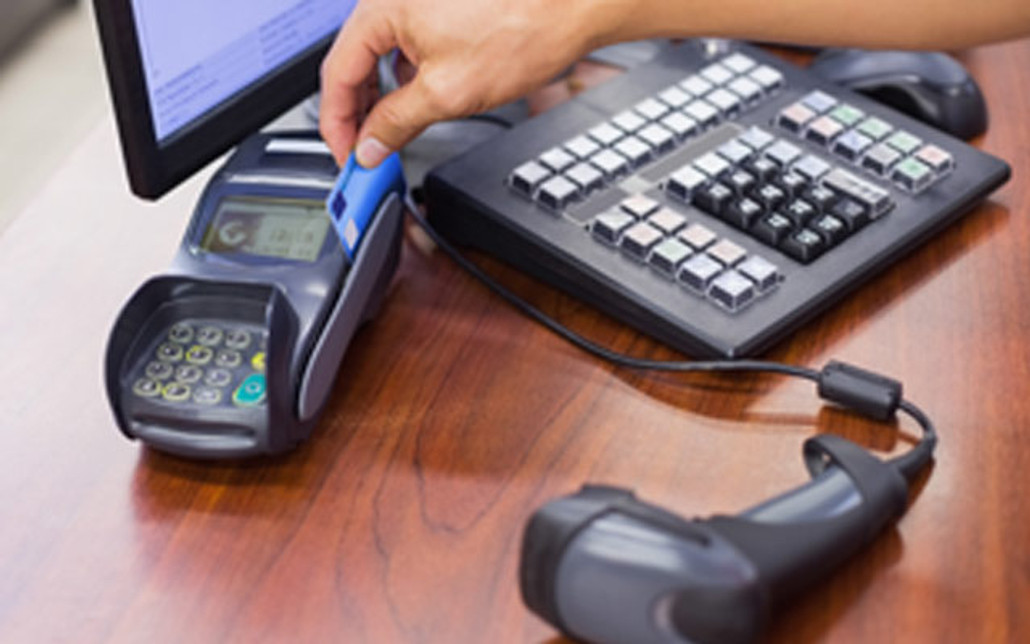Retailers face increasing pressure from within and without, making loss prevention a key driver for profitability. One way of doing this is installing a CCTV security solution.
When you’re thinking about a retail CCTV system you have various factors to consider driven by different needs.
This blog takes you through key considerations like view, visibility and non-security applications. After that, this article gives you some suggested systems to consider.
What is your need?
This may seem like an obvious question, after all, security cameras can help to solve a number of issues. However, depending on what issue you’re trying to solve, your monitoring requirements will differ.
Here are some practical examples:
Preventing shoplifting
Shoplifting is an issue for most stores and depending on your merchandising, stopping losses from happening can be tricky.
Position your cameras, so you can monitor heavy traffic areas like entrances. For instance, you could then display a feed from this camera onto a monitor. When customers can see themselves as they enter the store, this acts as a deterrent to potential shoplifters.
Additional cameras may also be required to keep an eye on problem areas. For example, areas which aren’t in continuous view by staff members, like the end of aisles.
There’s always a balance between making a store inviting and keeping goods secure until purchased. You can consider a number of different approaches to help you to monitor your store without disturbing the ambience.
Reduce internal losses
According to police taskforce Action Fraud, employee theft cost businesses £88 million in 2017-18. Smaller businesses aren’t immune, for example, the woman who stole £1,000 from a charity shop.
The role of CCTV, in this case, is to provide evidence for an internal investigation. Therefore, to do this the footage must be of sufficient quality to identify a person. To do this you’ll need to have a sufficient pixel density, it’s difficult to give an exact specification. If you have an Axis camera, they have a useful lens calculator.
Keeping staff safe
Front-line staff often take the brunt of customer dissatisfaction and sometimes anger. Unfortunately, assaults on shop workers are increasing. The last USDAW survey stated assaults were up 25%, in addition, threats were up by 38%. The British Retail Consortium 2019 Annual Crime Survey revealed that on average 115 retail employees are attacked every day.
The majority of violence and abuse comes as a result of staff challenging thieves.
A security system can help to monitor staff safety, particularly around trigger areas like tills or counters. While cameras themselves can be a deterrent, there is also further helpful technology that can assist.
Intelligent audio analytics running on a camera can detect high-pitched or loud noises, like screaming or shouting. Noise triggers the camera to record, capturing any threats or assaults clearly, so it can subsequently be used as evidence.
Secure your site
Burglary can often be overlooked, amidst the other pressures in retail. Remember your premises contain items which are attractive to thieves. Therefore, the threat of burglary is worth taking seriously, especially when your premises are not well secured.
As the threat is external, your focus here should be on the exterior of your premises. CCTV works best when combined with other security measures like alarms and lighting to discourage entry. An integrated security system can have a number of triggers like motion detection and entering restricted areas.

Multiple needs?
Of course, you could have a number of these needs. The good news is that it’s possible to address multiple needs with one surveillance system.
It’s also certainly worth noting down the needs you’ve identified as part of your GDPR documentation.
Areas of a store
A retail environment usually entails indoor and outdoor monitoring, as well as low-light areas like stock rooms.
Each of these areas presents a different challenge for CCTV. For example, monitoring a doorway can be tricky. The bright light outside against the darker interior means you need the wide dynamic range to see a detailed, balanced picture.
Here are some common areas of interest and which imaging technologies are useful to ensure usable footage is captured:
| Imaging technology | ||||
|---|---|---|---|---|
| Area | WDR | Colour night vision | IR night vision | 360° view |
| Doorway (interior) |

|
|||
| Doorway (exterior) |

|

|
||
| Perimeter |

|

|
||
| Interior overview |

|

|

|
|
| Stock room |

|
|||
CCTV varies in price dramatically as a result of the technology, lens and moving parts it contains. The ones you choose will depend on your needs and your budget.
For a more cost-effective approach, a small number of static view IP cameras can do the job.
If you’re trying to monitor a wide area with fewer cameras, pay attention to the field of view. The wider the field of view, the more of a scene you’ll see. Therefore, you could get better coverage with fewer units if they have a wide field of view.
How visible should your CCTV be?
Do you want cameras to be noticeable to act as a deterrent? Alternatively, should your cameras be discretely used for identification and evidence?
The answer to these questions comes from the needs you identified. If, for example, you’re trying to deter internal losses then a visible camera may help. In addition, this should be balanced with the ambience of the shop itself.
For unobtrusive monitoring, you may want to consider a covert camera system with multiple sensors feeding into one main unit. The small form factor therefore allows sensors to be discreetly installed, so they don’t catch the attention of your customers.
For stores which have had a physical security breach, you may wish for CCTV to be obvious. This can help to help to reassure staff and deter criminals.
Beyond security
Sophisticated CCTV systems importantly do more than just monitor for theft. Here’s a sample of the available applications:
Insight into customer activity
Heat maps can help you see which areas of the store get visited most. This intelligence can feed into your merchandising decisions.
Evidence for claims
Being able to produce usable footage if you’re involved in a claim against your store can help your case.
Reducing queues
Cameras can monitor the length of a queue. When a queue gets too long, it can create an alert and as a result, another till is opened.
Some suggestions to consider
There are potentially thousands of cameras that could work for you. To help you narrow down your choice, here are a couple of suggestions that we’ve seen work well for customers.
Axis Companion
Designed for small businesses, Axis Companion has a limited range of 8 cameras and three network video recorders.
The camera range includes indoor and outdoor models with a range of views and functionality. This makes it much easier to pick the right cameras for your store.

- Easy set-up
- Software is easy to use
- Mobile application
Wisenet
With three different camera ranges to choose from, Wisenet have solutions for every retail environment.
The Q series works well for all-around surveillance. For extra performance take a look at the Q range. The P series contains specialist units like 360° view and multi-sensor cameras. Wisenet also offers network video recorders, containing integrated PoE and their own WAVE software.
- Wide choice of products
- Wisestream compression technology
- Competitive pricing
Hikvision
With a wide range of affordable products, Hikvision is a popular choice. Hikvision have cameras for many different scenarios and NVRs from 4 to 64 channels. In other words, a full security system.
- Affordable
- Range of features
- Variety of applications
Conclusion
Retailers have a variety of pressures from shoplifting to internal theft which has led many to consider CCTV. This blog has covered some of the features to look out for depending on the area you’re monitoring. Finally, we've also given you some suggestions on what types of camera to consider.
If you’d like some help with a retail system, contact us for a chat or a quote.



